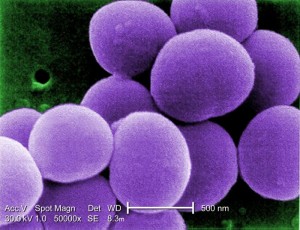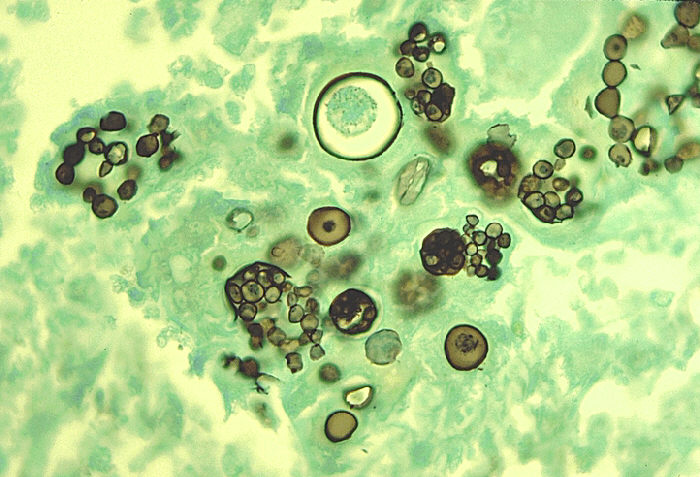Staphylococcus aureus is a species of gram positive cocci, which are aerobes/facultative anaerobes, non motile, non spore forming and arranged in irregular grape like clusters. They form golden or white colonies. Golden colonies are due to staphyloxanthin, a carotenoid pigment.
Staphyloxanthin inactivates the microbial effect of superoxides and other reactive oxygen species within neutrophils.
Pathogenesis
Pathogenesis occurs by production of toxins and inflammation. The typical lesion is abscess, which undergoes central necrosis and drains to the outside.

Virulence Factors
Toxins
• Exotoxins
• Enterotoxins
• Toxic shock syndrome toxin
Cell wall
Protein A
• Teichoic acid
• Polysaccharide capsule
• Peptidoglycans
Leukocidins
• a-toxins
• PV-leukocidins
Enzymes
• Coagulase
• Staphylokinase
• Hylauronidase
• Proteases
• Nucleases
• Lipases
Mechanism of Action
They are responsible for causing food poisoning.
• Super antigens are present which stimulate the release of IL-1 and IL-2 cytokines from lymphoid cells
• Stimulate enteric nervous system
• Stimulate vomiting center
They are resistant to stomach acid and enzymes
TSST (Toxic shock syndrome toxin)
• toxin enters blood stream causing toxemia
• these are superantigens
• they release of IL-1, IL-2 and tumor necrosis factor
• cause toxic shock

Exfoliatin
Exfoliatin is epidermolytic. It acts as a protease
Alpha toxins
Alpha toxins are responsible for:
a. necrosis of skin
b. hemolysis
c. formation of holes in the cell membrane
d. loss of low molecular weight substances from damaged cells
PV leukocidin
PV leukocidin causes pore formation in cell membrane. Mainly WBCs are involved.
Coagulase
Coagulase activates prothrombin to form thrombin, which walls off the infected site
Staphylokinase
Staphylokinase is a fibrinolysin. It breaks down thrombi.
Staphyloxanthin
Staphyloxanthin inactivates superoxides and reactive oxygen species.
Protein A
Protein A binds to Fc portion of IgG. It prevents activation of complement. No opsonization and phagocytosis takes place.
Teichoic acid
Teichoic acid mediates adherence of staphylococci to mucosal cells. It also plays role in induction of septic shock.
Peptidoglycan
Peptidoglycan has endotoxin like properties. It stimulates macrophage to produce cytokines.
Transmission
• Nose is the main site of colonization
• Hand contact
• Shedding from human lesions and fomites
Predisposing factors
• heavily contaminated environment
• reduced humoral immunity
• low neutrophils level
• i/v drugs abusers
• diseases like diabetes mellitus and chronic granulocytes disease
Clinical Symptoms
• skin infection
• eyelid infections
• lymphangitis
• septicemia
• endocarditis
• osteomyelitis
• pneumonia
• conjunctivitis
• food poisoning
• toxic shock syndrome
• scaled skin syndrome
Lab Diagnosis
Specimen for Identification
• pus
• swabs from infected sites
• sputum
• CSF
• food poisoning
Morphology
• gram positive cocci
• irregular grape like clusters
• aerobic/facultative anaerobes
• non motile
• non spore forming
Culture
For culture, temperature ranges from 10-42 C
• Blood agar
• Chocolate agar
• Mac Conkey agar
• Mannitol salt agar
Some colonies are beta hemolytic. Some may be white and non hemolytic.
Biochemical Tests
• Coagulase +ve
• DNAase +ve
• Catalase +ve
Novobiocin
- Sensitive – staphylococcus epidermidis – DNAase positive
- Resistant – staphylococcus saprophyticus – DNAase negative
Serological tests
• PCR
• Dry spot staphytect plus
 howMed Know Yourself
howMed Know Yourself




